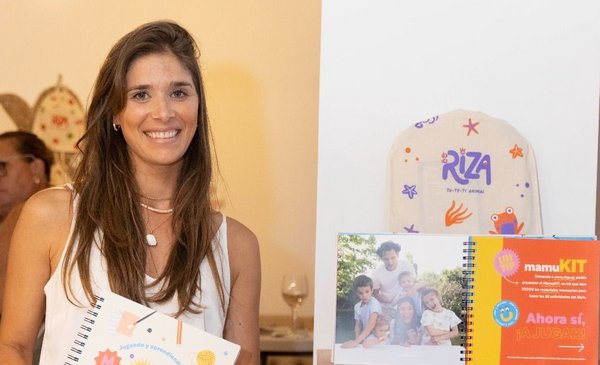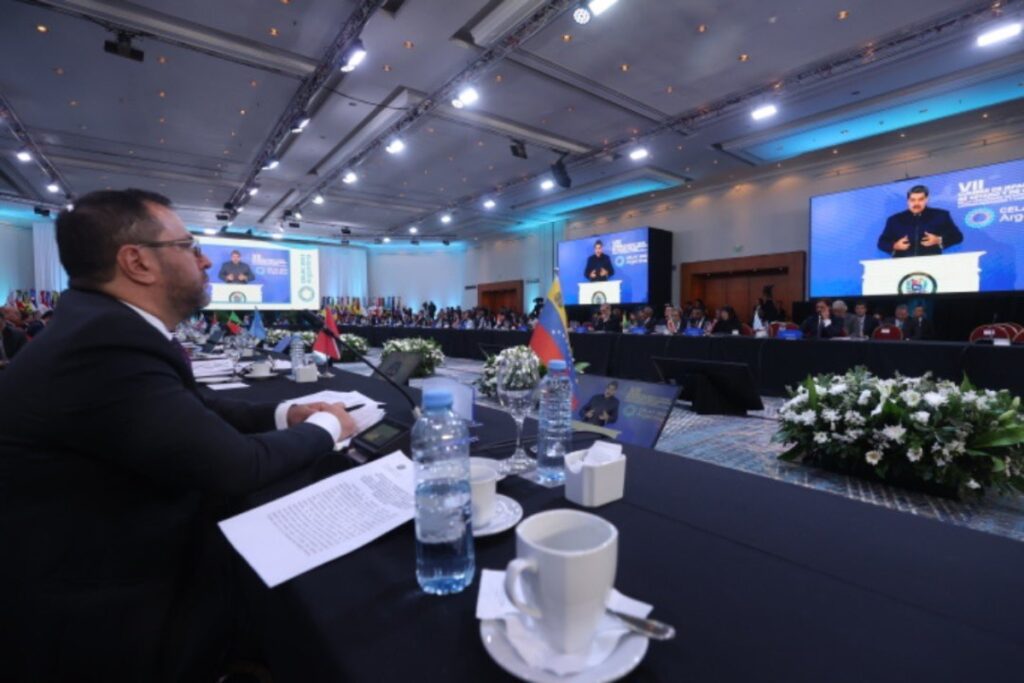For the family headed by Paz Cardoso and Diego Forlán, the sad period of the pandemic also had a bright side. After completing the courses forced by the covid-19 in her home, Mamurrí was born, an enterprise in which Paz took the role of teacher to present her children with innovative proposals with what she found at home that would allow them to learn while having fun and everyone They shared quality family time.
After the health emergency ended, Mamurrí became a weekend activity in great demand by the little Forlán Cardosos, but Paz felt the need to go one step further.
Mamurrí was a success on social networks —especially on Instagram— and the entrepreneur decided to materialize it in games that could reach all Uruguayan homes. This is how Riza, her own brand of children’s games, was born a little over a year ago.
With love and dedication as essential ingredients, Paz is in charge of creating the games, assembling the orders and even sending them. “In Riza I work with my mom and dad,” describes the businesswoman and assures that “There’s a super cute family love in Riza.”
After her first year with online sales and also with a presence in physical stores, the businesswoman affirms that the success of the initiative “exceeded our expectations” and with the same desire they want to continue growing and inspiring.
Below is the interview that Paz Cardoso had with Coffee & Business.
How was Riza Games born?
Riza emerged from what was Mamurrí in a pandemic when classes closed. My two oldest children (Martín and Luz Forlán) were in the kindergarten stage and César was one year old. I started doing activities with them at home that had a beginning and an end and they dedicated themselves to completing them.
Every day I waited for them with a different proposal, but each one had a lesson. They went back to class and had learned the letters, the numbers, they knew how to write their names, the seasons of the year, we talked about emotions; each activity had a lesson and they, without realizing it, learned a lot of things.
It was such a fascinating experience for the whole family that to this day my children continue to ask me for it and, in fact, we continue to do Mamurrí as a family on weekends. For Diego (Forlán) and for me it was the best. At that time we did it with recyclable things, which we found at home, because it was not possible to circulate much and I was left with the desire to do something else and Riza emerged with those same activities, but with excellent materials and quality so that it could reach everyone. the families.
How did that facet of an entrepreneur focused on children awaken in you? Have you ever studied anything related to pedagogy?
I studied up to the fourth year of medicine, there I married Diego and it was impossible for me to revalidate elsewhere and continue my career because he had to play around the world, we went to Brazil, India, Japan.
I did not study anything regarding education, but I had to be a mother and be the mother of many. At that time I had three, now there are four and very close, and I always loved crafts and doing activities with them.
Even when we lived in India or Hong Kong, I always did crafts with them, painting, getting dirty, I didn’t care if they got dirty; The idea is that they paint free. It happened naturally.
The first week that they sent us home we were healthy in the family and it was even an instance of enjoyment because the family nucleus was at home. After a week I realized that the boys needed a little more, they chose what to play with, if they wanted to play with cars, they played with cars; if they wanted to paint, they painted. But I got the feeling that they lacked a directed activity, that they needed to sit down with a slogan that had a beginning and an end.
When they finished it was a satisfaction of such a spectacular achievement and a moment of family and sharing regardless of age that was divine; it happened very naturally.
He has more than 55 thousand followers on Instagram. As an influencer, do you perceive yourself as inspiring? Would you like to inspire closer parenting?
I’d love to. When I started to share the things I did with Mamurrí I had such a spectacular response. Many people either do not have the initiative or the idea does not occur to them, once they saw that it was with simple things that they found at home and it could be achieved, I think that inspired many mothers and continues to inspire today.
The truth is that I love it and it’s great, not just getting rid of the screens and doing everything now and being in constant change that children have now; it’s giving yourself the space—even adults—to sit with the kids and spend that moment. What children enjoy the most is that moment of family gathering, and one is also filled with it.
How was the process of landing Mamurrí in more massive products like those carried out in Riza?
I started with the idea that they were educational things, durable and resistant products, that it is not a game that you use two or three times and it is in poor condition; make it of good quality so they can play over and over again. The idea is that they pass from generation to generation and remain valid.
All the games are produced in Uruguay and are handmade.
Was domestic production a challenge?
Yes, it is difficult to produce here. The material, the labor limits me, sometimes that blocks me in some games. Above all, many times my imagination flies and then lowering them ashore and making them real here in Uruguay is very difficult because there are things that I can’t find a way to do. I have to give it a twist to be able to make that same product that I imagine capable of otherwise, but with the same end and the same objective.
Do you make an effort to have it produced in Uruguay?
Huge effort. Labor is expensive, materials are expensive. When I think of a product and lower it to the ground, it gives me prices that are unfeasible. All day I am giving it a spin to try to reach a good quality product at an affordable price.
What is Riza’s star product?
Today it is super even. The one that is a success is the hamburger, it is the first game we made with Riza. The burger has different pieces (such as lettuce, tomato, cheese), with 12 different patterns including different orders.
The child has to separate these pieces and assemble them in the order that corresponds to each order. In addition to the game itself, it is colorful and Riza focuses a lot on color because it stimulates children.
In everything I am inspired by my children and what I see of them, at different ages. José is one and a half years old, César is three, Luz is five and Martín is six; As they get older, I think about games for older players because Martín is older and he challenges me more.
Paul Kreimbuhl
What price range does Riza carry? Is there a target audience?
It is for all public. There are cheaper sets, which start at $400, and the more expensive ones—among which is the $2,500 hamburger—that take a long time to cut and paint and labor are more expensive. The sale is even and there is a bit of everything, there are also many times discounts that make the prices drop and the products accessible to everyone.
What are the sales channels?
We have the website (www.riza.uy), there are all the games and you can buy them online with free shipping throughout the country. Today we are in Peekaboo toy stores throughout the country (in Montevideo, Punta del Este, Mercedes and Young), and we are also in Punta del Este in Gorlero until April together with MKL for clothing and Cienta for shoes.
Thinking ahead, how do you imagine Riza to evolve in the coming years?
I would like it to be known, that everyone can enjoy their Riza game, that it reaches more children. I would love it, happy that it reaches everywhere. Let it grow a lot, but above all so that it can enter all homes.
In addition to being an entrepreneur, she also had her first experience as a writer. What can be found in Mamurrí’s book?
Yes, at the end of 2022 I wrote a Mamurrí book. There he tells how Mamurrí came about, how Riza began as a result of Mamurrí, he gives guidelines—we called them the basic rules of Mamurrí—that make it easier for children to pay attention, such as: good posture, not bringing toys or distractions (such electronic).
In addition to how to predispose children to activities, he gives advice so that they can get dirty and paint without it being a stress for the adult, and that the child can enjoy because if the adult is stressed next to them, they do not paint calmly.
Then there are 20 step-by-step activities of things to do with the children, and at the end a space for them to create their own Mamurrí.
After the book we also launched the Mamukit that has all the materials to do the 20 activities in the book. It can be obtained on the Riza website and also in the commercial premises where Riza products are.


















